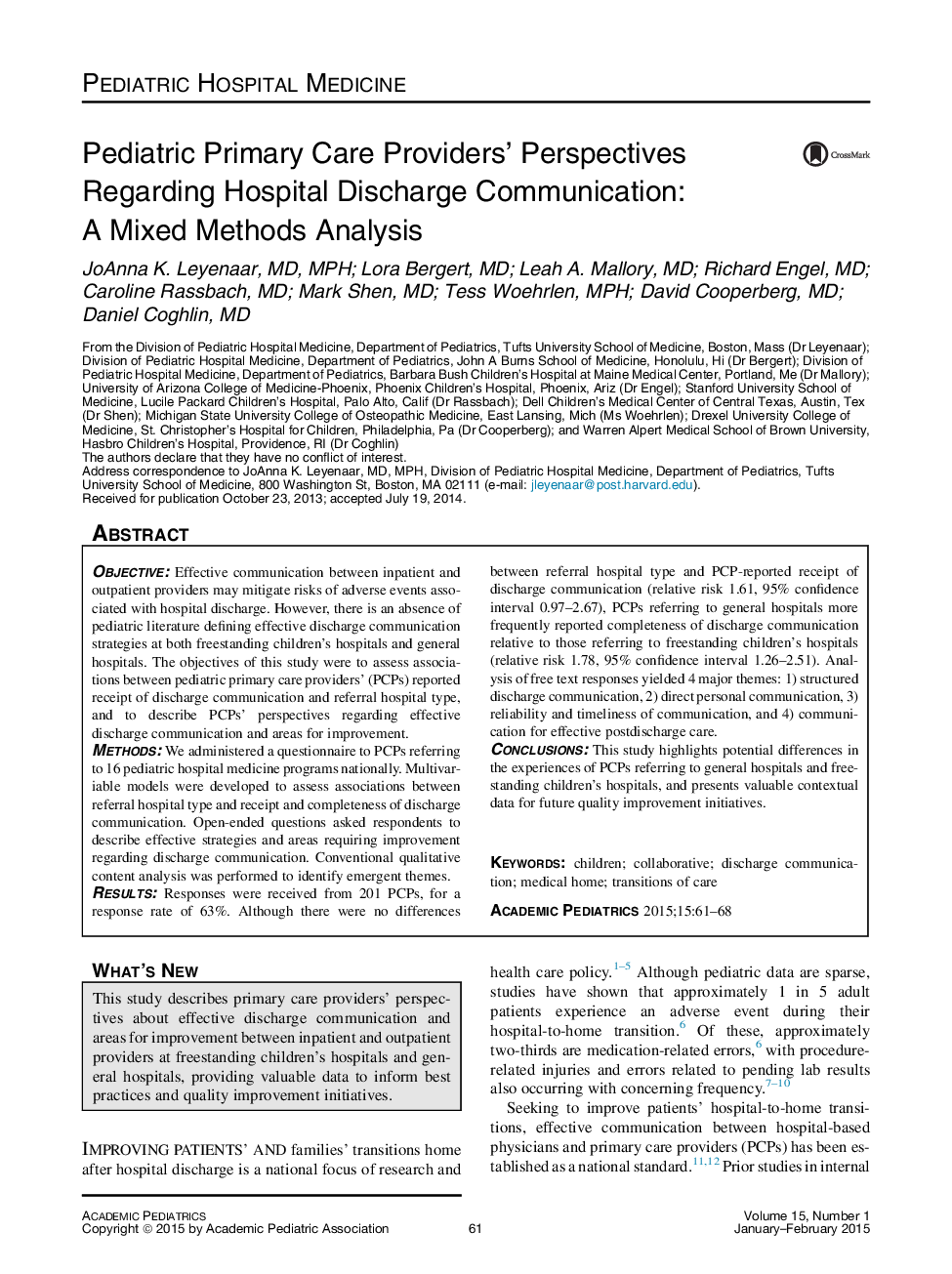| Article ID | Journal | Published Year | Pages | File Type |
|---|---|---|---|---|
| 4139556 | Academic Pediatrics | 2015 | 8 Pages |
ObjectiveEffective communication between inpatient and outpatient providers may mitigate risks of adverse events associated with hospital discharge. However, there is an absence of pediatric literature defining effective discharge communication strategies at both freestanding children's hospitals and general hospitals. The objectives of this study were to assess associations between pediatric primary care providers' (PCPs) reported receipt of discharge communication and referral hospital type, and to describe PCPs' perspectives regarding effective discharge communication and areas for improvement.MethodsWe administered a questionnaire to PCPs referring to 16 pediatric hospital medicine programs nationally. Multivariable models were developed to assess associations between referral hospital type and receipt and completeness of discharge communication. Open-ended questions asked respondents to describe effective strategies and areas requiring improvement regarding discharge communication. Conventional qualitative content analysis was performed to identify emergent themes.ResultsResponses were received from 201 PCPs, for a response rate of 63%. Although there were no differences between referral hospital type and PCP-reported receipt of discharge communication (relative risk 1.61, 95% confidence interval 0.97–2.67), PCPs referring to general hospitals more frequently reported completeness of discharge communication relative to those referring to freestanding children's hospitals (relative risk 1.78, 95% confidence interval 1.26–2.51). Analysis of free text responses yielded 4 major themes: 1) structured discharge communication, 2) direct personal communication, 3) reliability and timeliness of communication, and 4) communication for effective postdischarge care.ConclusionsThis study highlights potential differences in the experiences of PCPs referring to general hospitals and freestanding children's hospitals, and presents valuable contextual data for future quality improvement initiatives.
